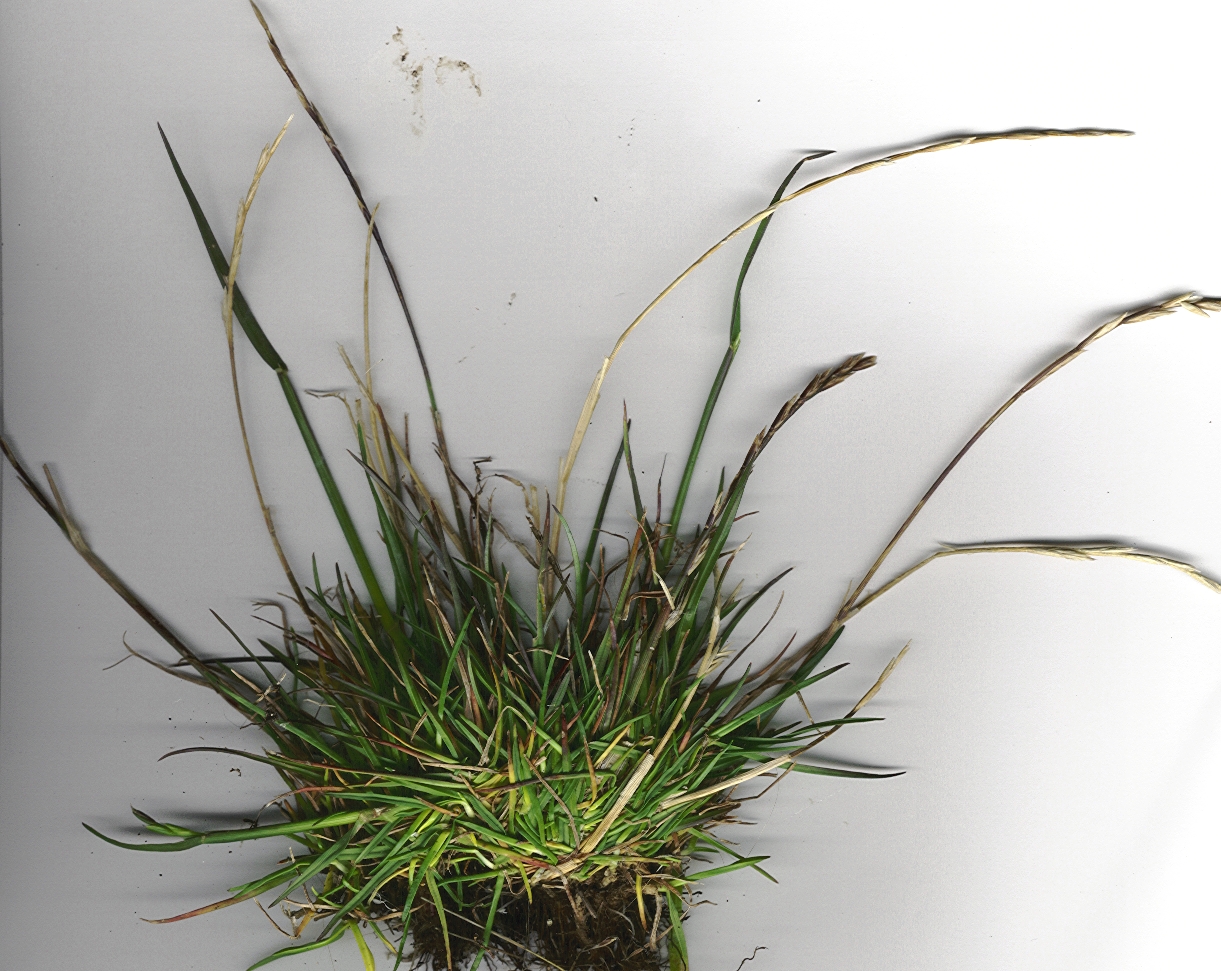- Ryegrass
image_width = 250px
image_caption = Perennial Ryegrass ("Lolium perenne")
regnum =Plant ae
divisio = Magnoliophyta
classis =Liliopsida
ordo =Poales
familia =Poaceae
genus = "Lolium"
genus_authority = L.
subdivision_ranks = Species
subdivision = See textRyegrass ("Lolium") is a genus of nine species of tufted
grass es, familyPoaceae . Also called tares (even though there is no firm evidence that this is the same as the plant given that name in English language translations of theBible - vetches are another candidate), these plants are native toEurope ,Asia and northernAfrica , but are widely cultivated and naturalised elsewhere. Ryegrasses are naturallydiploid , with 2n = 14, and are closely related to thefescue s "Festuca".Ryegrass should not be confused with
Rye , which is a grain crop.pecies
The following are accepted as distinct species:
*"Lolium canariense " Steud. - Canary Islands Ryegrass
*"Lolium edwardii " H.Scholz, Stierst. & Gaisberg
*"Lolium multiflorum " Lam. - Italian Ryegrass
*"Lolium perenne " L. - Perennial Ryegrass
*"Lolium persicum " - Persian Ryegrass or Persian Darnel
*"Lolium remotum " Schrank
*"Lolium rigidum " Gaudin - Stiff Darnel, Wimmera Ryegrass
*"Lolium temulentum " L. - Darnel, Poison DarnelCultivation and uses
Ryegrasses contain some species which are important grasses for both
lawn s, and aspasture and for grazing andhay forlivestock , being a highly nutritious stock feed. Ryegrasses are also used insoil erosion control programs. It is the principal grazing grass inNew Zealand where some 10 million kilograms of certified seed are produced every year. There is a large range ofcultivar s. The primary species found worldwide and used for both lawns and as a forage crop isperennial ryegrass ("Lolium perenne"). Like many cool-season grasses, it is often infected by a clandestine, fungal endophyte which lives symbiotically within its leaves.Some species, particularly "L. temulentum", are
weed s which can have a severe impact on the production of wheat and other crops. Ryegrasspollen is also one of the major causes ofhay fever .ynonyms
*"L. ambiguum" = Lolium multiflorum"
*"L. annuum" = "Lolium temulentum"
*"L. arundinaceum" = "Festuca arundinacea"
*"L. berteronianum" = "Lolium temulentum"
*"L. brasilianum" = "Lolium perenne"
*"L. canadense" = "Lolium perenne"
*"L. crassiculme" = "Lolium rigidum"
*"L. cuneatum" = "Lolium temulentum"
*"L. dorei" = "Lolium persicum"
*"L. giganteum" = "Festuca gigantea"
*"L. gracile" = "Lolium temulentum"
*"L. lepturoides" = "Lolium rigidum" subsp. "lepturoides"
*"L. marschallii" = "Lolium perenne"
*"L. parabolicae" = "Lolium rigidum"
*"L. pratense" = "Festuca pratensis"
*"L. remotum" = "Lolium temulentum" subsp. "remotum"
*"L. romanum" = "Lolium multiflorum"
*"L. scabrum" = "Lolium multiflorum"
*"L. siculum" = "Lolium multiflorum"
*"L. subulatum" = "Lolium rigidum" subsp. "lepturoides"
*"L. teres" = "Lolium rigidum" subsp. "lepturoides"
*"L. trabutii" = "Lolium rigidum"References
* [http://rbg-web2.rbge.org.uk/cgi-bin/nph-readbtree.pl/feout?FAMILY_XREF=&GENUS_XREF=Lolium&SPECIES_XREF=&TAXON_NAME_XREF=&RANK= Flora Europaea: "Lolium"]
* [http://www.onlineturf.co.uk/content/214 "Ryegrass Lawn - Percentage of grass seed sown"]
Wikimedia Foundation. 2010.

